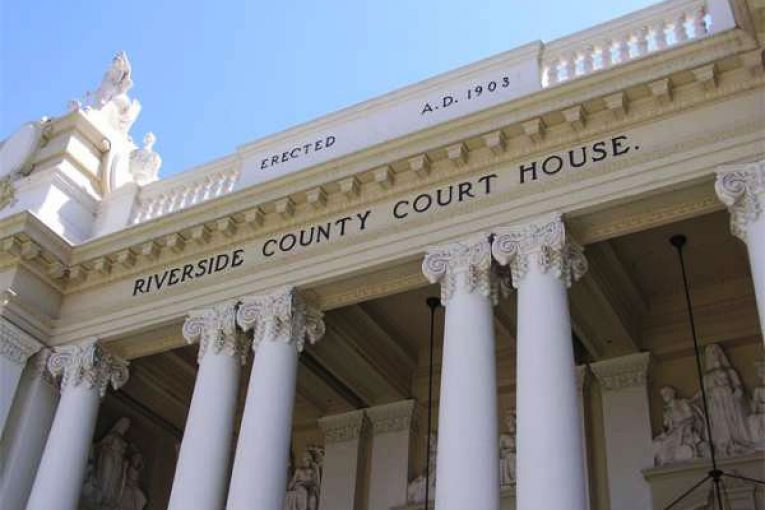

By Talia Kruger
INDIO, CA –- Manuel and Moses Olaez appeared again in Riverside County Superior Court Wednesday for their ongoing jury trial for the murder of a 25-year-old man and attempted murder of a minor in 2016.
In the afternoon, the lead investigator was brought to the stand and was questioned about the testimony of “John Doe,” the minor, regarding the events leading up to the murder and attempted murder.
It was revealed that Doe had gotten into an altercation with one of the men that was associated with the brothers and an unidentified man at a Starbucks prior to the events that transpired on the rail tracks.
The man, said the officer, associated with the brothers allegedly got five inches away from Doe’s face and was “acting crazy.”
Due to this prior history of hostility between the men, Doe indicated to the investigator he believed that he was the target of the attack that resulted in the death of his 25-year-old friend.
The next witness called to the stand was a former detective with the gang impact team for Riverside County.
Under the direction of the prosecuting attorney, Joshua Degonia, the detective described several controlled firearm purchases he had helped facilitate following the murder.
The first purchase, through undercover informant “Jane Doe,” occurred when Jane picked up Moses who instructed her to drive to a facility where she purchased two rifles and a handgun.
The next controlled purchase, also through Jane Doe with Moses as the middle man, was larger: This time, five firearms were purchased. During the negotiations, it was agreed upon that one of the firearms was to be an M1 carbine rifle, the type of rifle later determined to be the murder weapon.
However, after the deal, the police found that Jane Doe was given five different firearms than what was agreed upon.
Finally, in a third controlled purchase on Nov. 17, 2016, using two undercover informants, Jane Doe and “James Doe,” the police once again made contact with Moses who acted as a middleman firearms dealer.
On the days leading up to the purchase, Moses and James Doe negotiated the purchase of a 9mm pistol and an M1 carbine rifle.
According to the detective, on the 17th Jane Doe and James Doe drove to the Oleaz residence to purchase the guns. Once they arrived, Moses walked out with the 9 mm pistol which was given to James Doe.
When asked about the M1 carbine riffle, Moses told the two that it was in a separate location nearby and that they would need to drive to get it.
This is when, according to the detective, Moses got in a car with who Jane identified as “Manuel” and another man and drove to the location.
According to the detective, the residence they arrived at was that of the brother’s uncle.
The officer testified Moses got out of the car and brought back what was later determined to be the M1 carbine rifle used in the murder. When brought out, James asked Moses, “How much does he want for it?” referring to a third party, and Moses responded $1,000.
Following this testimony, the defense got up to cross and attempted to emphasize several key points.
Boyd questioned the detective as to whether or not Manuel was involved in the first or second purchase. The detective responded that he did not believe so.
Next Boyd questioned him as to whether or not the camera surveillance of the third encounter showed that it was indeed Manuel in the car. The detective responded that they knew it was him due to Jane Doe’s identification.

Defense Attorney James Boyd also pointed out the fact that Moses and James Doe indicated that there was a third person involved in the purchase, someone for whom Moses might have been acting as a middleman, as in all of the controlled purchases that came before it.
When DDA Degonia redirected the detective, he attempted to counter these points.
To the lack of evidence as to whether Manuel was there for the third controlled purchase, Degonia asked the witness why he believed that it was Manuel, beyond Jane’s testimony.
The detective explained how the shirt the man was wearing was very similar to one that Manuel was wearing in a post on Facebook.
Finally, to the idea that Moses was only a middleman for the sale of the weapon, DDA Degonia asked whether or not it appeared to the detective that Moses had free access to the weapon, to which he responded yes.
The last witness called to the stand was an officer who had made maps of locations relevant to the crime. The goal of these maps were to demonstrate the distance from different locations.
The deputy determined that by three different routes, the distance from the Depot Deli to the Olaez residence was roughly 0.28 miles or about a five-to six-minute walk. In total, the Depot Deli to Olaez residence to tracks where shell casings were found was 0.61 miles.
Following his testimony, the court called recess for the day and is to return later this week.